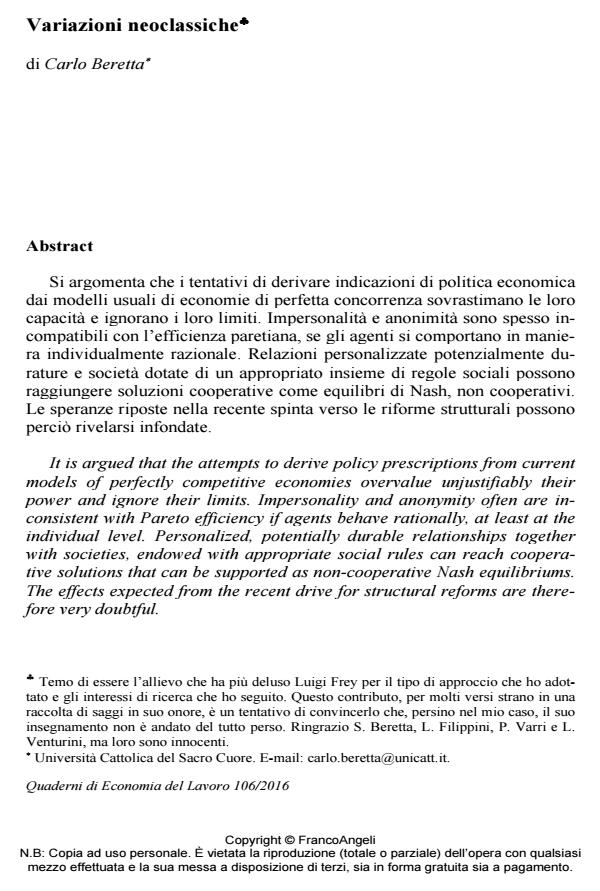Variazioni neoclassiche
Journal title QUADERNI DI ECONOMIA DEL LAVORO
Author/s Carlo Beretta
Publishing Year 2017 Issue 2016/106
Language Italian Pages 19 P. 101-119 File size 793 KB
DOI 10.3280/QUA2016-106006
DOI is like a bar code for intellectual property: to have more infomation
click here
Below, you can see the article first page
If you want to buy this article in PDF format, you can do it, following the instructions to buy download credits

FrancoAngeli is member of Publishers International Linking Association, Inc (PILA), a not-for-profit association which run the CrossRef service enabling links to and from online scholarly content.
It is argued that the attempts to derive policy prescriptions from current models of perfectly competitive economies overvalue unjustifiably their power and ignore their limits. Impersonality and anonymity often are inconsistent with Pareto efficiency if agents behave rationally, at least at the individual level. Personalized, potentially durable relationships together with societies, endowed with appropriate social rules can reach cooperative solutions that can be supported as non-cooperative Nash equilibriums. The effects expected from the recent drive for structural reforms are therefore very doubtful.
Carlo Beretta, Variazioni neoclassiche in "QUADERNI DI ECONOMIA DEL LAVORO" 106/2016, pp 101-119, DOI: 10.3280/QUA2016-106006